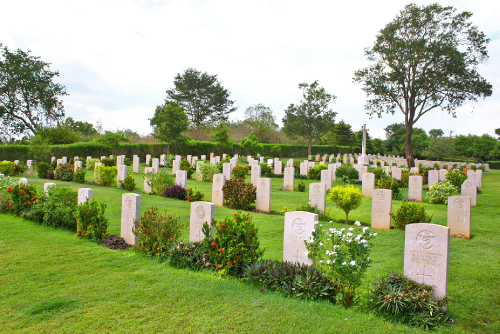Travelling to Trincomalee is not for the fainthearted. The journey is long and arduous, but the rewards are worth it. This city on Sri Lanka’s northeast coast is home to some of the most stunning natural beauty in the world, as well as a rich and fascinating history. From the towering Koneswaram Temple to the pristine beaches of Uppuveli, Trincomalee has something for everyone.
But what really sets Trincomalee apart is its sense of history and culture. This city has been a crossroads of cultures for centuries. Its distinct blend of Tamil, Sinhalese, and European influences is evident in everything from its architecture to its cuisine.
War-torn background
Sighting the blissful environs of Trincomalee decades after the end of a decades-old war was moving on a Tuesday morning. There is no longer a war-torn background here, but instead, a heavy influx of carefree crowds thronging the beaches to feel the golden sand on their skin.

Lovers’ Leap: where love and tragedy meet
The long and empty stretch of the Anuradhapura-Trincomalee road can be a daunting sight. The road is shiny under the scorching sun, and the only sound is the occasional rumble of a passing truck. It’s easy to feel isolated and alone on this road, and the heat can be oppressive.
Unless you’re a foreigner fond of getting a tan, you may not like the idea of getting out of the car. But if you do, you’ll get stunning views of the surrounding countryside. The road winds through lush green hills and valleys, and you may even spot wild elephants or monkeys.
So, if you’re feeling adventurous, take a break from your journey and stretch your legs. Just wear sunscreen and a hat, and bring plenty of water.
Some cadjan hut fences were embellished with palm leaves, giving you the feel of being in Jaffna, which is still miles away.
Cracked rocks
Unattended shrine rooms, roofless houses, cows grazing alone, dust-spewing roads, burnt wood, and cracked rocks reign in the area.
The city of Trincomalee has a reputation mainly for its large harbour. It houses major naval bases and an Air Force base too. Read the sky deep into the night. Rise early to witness the daybreak sneak over the horizon with its large golden plate – sunrise, that is – and the saffron rays that ring the sun add another blissful moment.
The Kovil is said to have existed even before the arrival of Prince Vijaya. Indian Pallava, Chola and Pandya kings contributed to this religious site.

Trincomalee British Cemetery: A Tribute to the Fallen
The Koneswaram temple is believed to have been a major religious shrine since Prince Vijaya arrived 2500 years ago. The internet encyclopedia Wikipedia says this shrine was demolished by Buddhist King Mahasena, who ‘built a Buddhist temple and Dagoba in its place. However, it cites no references to support the fact. Located close by is Swami Rock, also dubbed Lovers’ Leap, which embellishes the city’s folklore.
Fatal leap
As one folktale tells, two devoted lovers leapt from atop the mountain but were rescued by a Swami. ‘Sri Lanka Insights Guide’ offers another story:
“… on account of a Dutch official’s daughter, Francina van Reede, who threw herself off the rock after watching her unfaithful husband desert her by sea. Although her suicidal attempt was unsuccessful, and she went on to marry for a second time eight years after, her father erected a pillar to mark the incident.”
Kal and niya mean stone and land respectively in Tamil. The area is famous for its hot water wells. Each well has a high wall with a rectangular corral. Every spring is believed to have a different temperature, with one well overly hot. In any case, it seems more faith than reality.
Even during the day, water gives a luxurious feeling of warmth. The area is now under Mari Amman Kovil’s control. The springs have separate changing areas and no footwear is allowed.
During World War II Ceylon was a major naval air force base against Japan. The British used the eastern border for jungle warfare training. The British who died in the war were honoured in six cemeteries: four in Colombo, one each in Kandy and Trincomalee. Trincomalee cemetery’s grandeur is second only to Kandy, indicating the British flair for lush landscapes. It doesn’t scare visitors, as it is supposed to. The cemetery is located outside Trinco, on Nilaveli Road. The cemetery is looked after by a soft-spoken watcher who is willing to share information about the cemetery’s history. Visitors are requested to write their comments in the guest book before leaving the cemetery.
Epigraph: Though far away, you will live forever in our tenderest memories. There is a land of the living and a land of the dead; And the bridge is love. Their name liveth for evermore.
Nilaveli – the ‘blue waters’, loosely translated into English – doesn’t let you touch the waters, if you are a nature admirer. Your heart would be more drawn to the glistening tide and the waves, too arresting to forget. Turquoise waves jostle into each other as you bask in nature’s wonder. Lay your bare feet on the sunny golden sand and fix your thoughts: serenity steals your mood for a while.
Sri Lanka is blessed with beautiful beach scenery. Compared to a number of foreign beaches, many of these seem almost virgin. Foreigners are keen on our beaches because of their cleanliness. Yet it doesn’t seem so on the eastern beaches. Human waste has fouled them. All beaches have become dooryards for mushrooming tourist hotels. Many hotel structures lack aesthetic sense as well; their owners do not appear to think about nature too. The waste from these luxurious hotels is drained to the beach, attracting more crows than tourists to the beach.
Sachitra Mahendra




